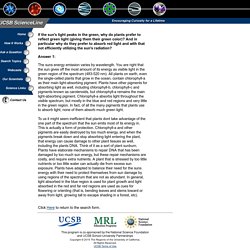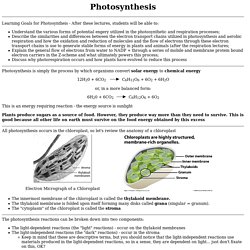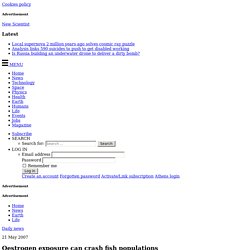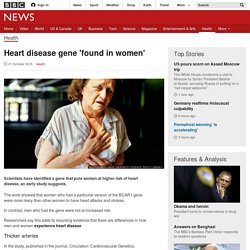

HCPstructures. Young men urged to join stem cell register to plug 'desperate' shortage. A blood cancer charity is calling on young men with “in demand” stem cells to sign up to become donors, to combat a “desperate” shortage.

Men between the ages of 16 to 30 have the most sought after stem cells, but they only make up 15 per cent of the register, according to the Anthony Nolan charity. A fifth of the 345 British men in this age group surveyed by the charity said a lack of information put them off from registering. A further 34 per cent said that they were afraid it may be painful, while 27 per cent said they did not like needles or hospitals. The charity made the call after a student launched her own appeal on social media to try to find a stem cell donor. Cardiff University student Vithiya Alphons, 24, was diagnosed with aggressive leukaemia in the final year of her medical degree. She must now find a donor in order to receive a stem-cell transplant, made more difficult by her Sri Lankan heritage. "There are so many myths that surround stem cell donation. Succession. UCSB Science Line. Answer 1: The suns energy emission varies by wavelength.

Photosynthesis. Learning Goals for Photosyntheis - After these lectures, students will be able to: Understand the various forms of potential engery utilized in the photosynthetic and respiration processes; Describe the similarities and differences between the electron transport chains utilized in photosynthesis and aerobic respiration and how the oxidation and reduction of molecules and the flow of electrons through these electron transport chains is use to generate stable forms of energy in plants and animals (after the respiration lectures; Explain the general flow of electrons from water to NADP + through a series of mobile and membrane protein bound electron carriers in the Z-scheme and what ultimately powers this process; Discuss why photorespiration occurs and how plants have evolved to reduce this process Photosynthesis is simply the process by which organisms convert solar energy to chemical energy or, in a more balanced form: This is an energy requiring reaction - the energy source is sunlight.

ATP/ADP. Adenosine triphosphate. Advertisements.

Oestrogen exposure can crash fish populations. Oestrogen, at levels common in municipal wastewater, can cause fish populations to crash.

The hormone feminises the male fish, which renders them infertile. In many countries, oestrogen is present in wastewater due to the widespread use of contraceptive pills. It has previously been shown in the laboratory that both natural and synthetic forms of the hormone can cause feminisation, but the impact of continuous, low-level exposure of oestrogen on wild fish populations had not been fully explored.
Now Karen Kidd, an ecotoxicologist at the University of New Brunswick in Saint John, Canada, and colleagues tested the effects of synthetic oestrogen on the wild fathead minnow population in a 34-hectare experimental lake in Ontario. Kidd’s team first surveyed minnow populations for two years. Advertisement Within a year, male minnows showed delayed sperm development, smaller testes, and production of egg proteins. Heart disease gene 'found in women' - oestrogen transcriptional factor.
Image copyright SOUTHERN ILLINOIS UNIVERSITY/SCIENCE PHOTO LIBRARY Scientists have identified a gene that puts women at higher risk of heart disease, an early study suggests.

The work showed that women who had a particular version of the BCAR1 gene were more likely than other women to have heart attacks and strokes. In contrast, men who had the gene were not at increased risk. Researchers say this adds to mounting evidence that there are differences in how men and women experience heart disease. In the study, published in the journal, Circulation: Cardiovascular Genetics, researchers from University College London pooled data from five European research projects, involving nearly 4,000 men and women. Comparing their genes, the health of their blood vessels and the thickness of key arteries, scientists pinpointed a version of a gene that was linked to a higher risk of heart attacks, strokes and diseased blood vessels in women. "It is imperative that everyone takes steps to prevent it. Explaining Elephants’ Cancer Resistance. Four views: How can we save the rhino from poachers? Rhinos are in trouble.

The ancient Sumatran rhino has been declared extinct in Malaysia, following the fate of black rhinos in West Africa in 2011. Central Africa's northern white rhino has been reduced to four animals, and conservationists say the more plentiful southern white rhinos are under unprecedented attack from poachers eager to sell the horns to Asian and Arab buyers. Blood Donation. If you have blood group A then you have got the A antigen on your red cells.

Blood group B means you have the B antigen, while group O has neither, and group AB has both A and B antigens. Group O has neither A nor B antigens on the surface of their red cells so red cells of this group can be given safely to any other group. This is why group O donors are known as 'universal red cell donors. Group O makes both anti-A and anti-B antibodies. The ABO system has associated anti-A and anti-B antibodies, antibodies being the body’s natural defence against foreign antigens. Similarly, blood from someone with blood group B contains anti-A antibodies and those with group O contain both anti-A and anti-B whilst those with group AB have neither anti-A nor anti-B.
Why is the X chromosome so odd? Traffic analogy helped us crack the mystery. You may not be aware of it, but one of your chromosomes – the X chromosome – is considerably different from the rest and has posed a puzzle for scientists for over a decade.

Early in mammalian evolutionary history, what is now the X chromosome was just like any of our other chromosomes. But at some point it evolved to be different. Unlike all other chromosomes, one of the two X chromosomes in women is inactivated in nearly all cells. It also has an extremely low mutation rate and – most perplexingly – the genes that are found on it are active in relatively few of our tissues. Now a study we recently published in PLOS Biology, has begun to shed light on what’s going on – by using a traffic analogy. Battle of the sexes In humans, each cell normally contains 23 pairs of chromosomes. Like all other chromosomes, the X chromosome carries genes that are used to create proteins that go on to produce observable traits. Traffic jams There are also some practical applications from this research. Animation. Saltatory Conduction Nerves 2.
Animation of Acetylcholine. AQA Unit 4 Biology Revision - Physics & Maths Tutor.